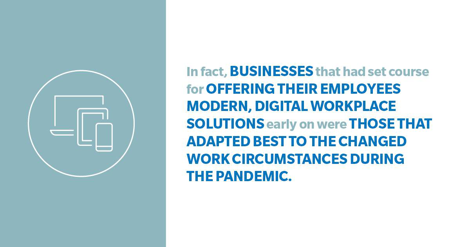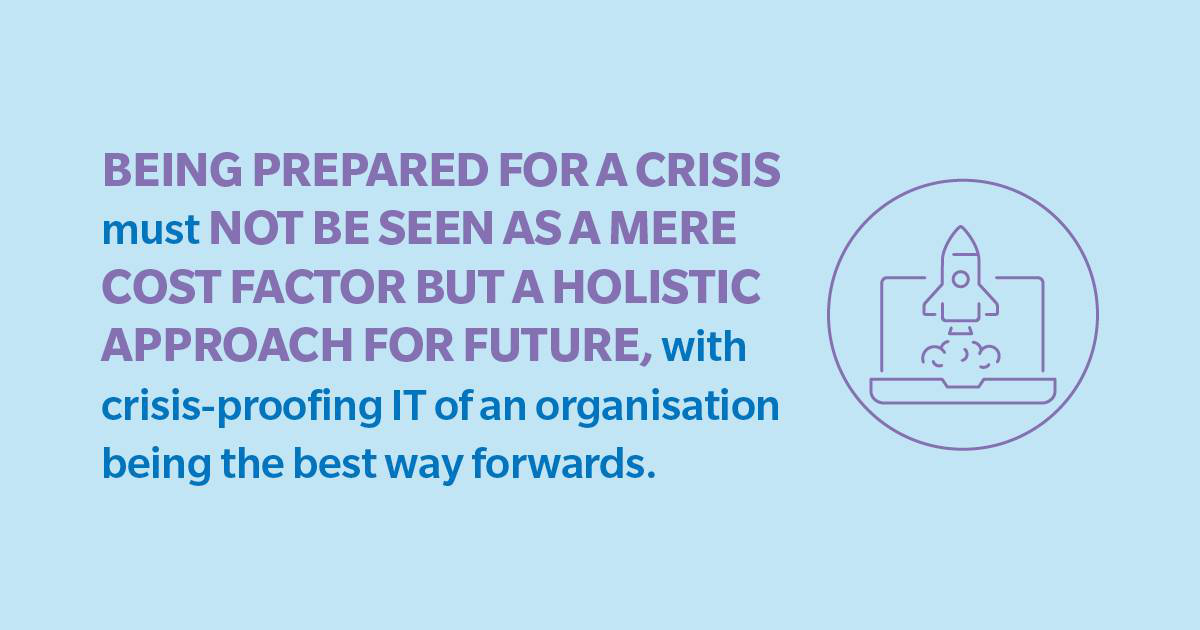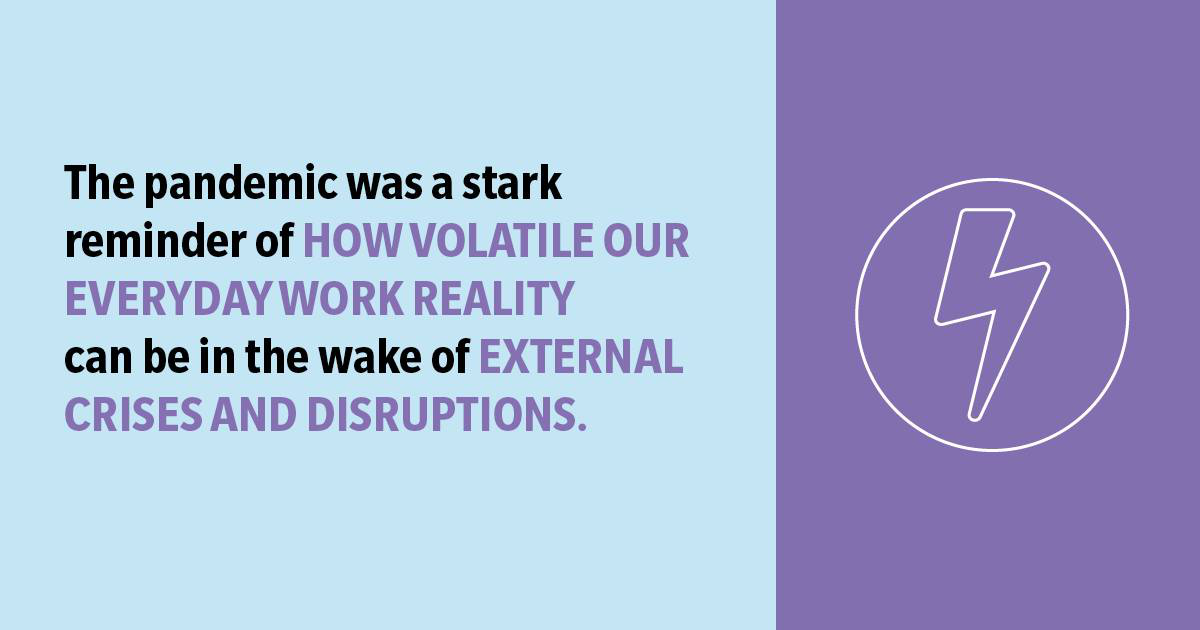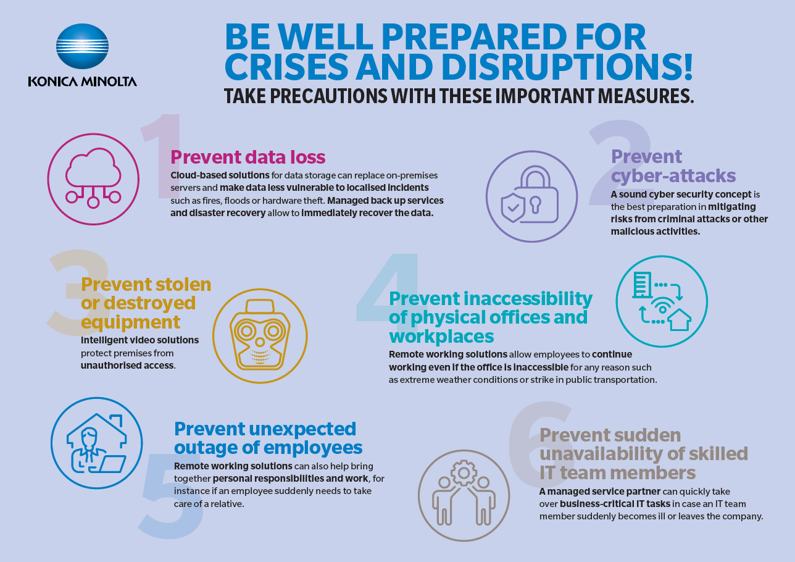It is possible to effectively protect premises from unauthorised access using modern, state-of-the-art smart video monitoring devices, he explains: "At Konica Minolta Supplies Manufacturing, S.A.S, our production site for toners in France, we had a problem with theft on several occasions at the facility. We were able to effectively resolve this issue with our Mobotix smart video solutions DualDome D15 and M15 thermal cameras for day and night monitoring and M25 and V25 high performance lenses. These measures significantly improved security on-site." This exemplifies the fact that break-ins and burglaries are not a risk that a business simply has to accept — there are effective counter-measures available at an affordable cost.
Resolution: What to do when an external crisis hits an SMB
A lot can be done to prepare for external crises and mitigate their impact. Yet, it is in the nature of such crises to strike at an unexpected time or take on forms that cannot be anticipated. The current pandemic is probably the best example of this. Even with capable IT, quick reaction is key to successfully navigating such incidents. Depending on the incident itself, external IT support can provide a helping hand in swiftly resolving the issue at hand. "Take disaster recovery as an example", says Yoann Fortini: "When one of our customers loses access to its data, for example due to fire in one location, a managed backup solution allows us to immediately recover the data required to quickly continue work from a different location with minimal process interruptions. Our local support teams are there to step into action immediately."

A long-term trusted IT service partner is a valuable asset, even under ordinary circumstances. In times of crisis, however, an expert partner with a profound understanding of the company, its work processes and its IT setup can make a decisive difference to the fate of the entire business. "I highly recommend finding such a partner early on. Even if a service partner such as Konica Minolta is happy to provide fast support to a new customer in need as well — in such a situation, time is of the absolute essence. I would argue that this is probably the most important preparation step of all: Having a partner you can quickly turn to in such situations", Yoann Fortini states.
This can also be the case if a team member in a company responsible for IT suddenly becomes unavailable, for example due to a sudden illness, or simply because they leave the company. With the skilled labour shortage in IT, this can quickly become a significant issue for a small- or medium-sized company, as they tend to have only one or two employees responsible for their entire IT setup. A managed service partner such as Konica Minolta can then quickly take over even business-critical IT tasks, provide an IT helpdesk for employees and so on.
Stronger together: Making the best of difficult situations
 With all the hardships businesses in particular had to endure with the current pandemic, it has demonstrated the value resilient and agile IT has for a company of any size. It can keep business operational even under difficult circumstances. Arguably even more importantly, it has also shown that resilient IT and modern workflows go hand in hand. In fact, businesses that had set course for offering their employees modern, digital workplace solutions early on were those that adapted best to the changed work circumstances during the pandemic.
With all the hardships businesses in particular had to endure with the current pandemic, it has demonstrated the value resilient and agile IT has for a company of any size. It can keep business operational even under difficult circumstances. Arguably even more importantly, it has also shown that resilient IT and modern workflows go hand in hand. In fact, businesses that had set course for offering their employees modern, digital workplace solutions early on were those that adapted best to the changed work circumstances during the pandemic.
This is a strong example of how being prepared for a crisis must not be seen as a mere cost factor but a holistic approach for future, with crisis-proofing IT of an organisation being the best way forwards. Here, small- and medium-sized businesses can benefit most from working with a strong partner such as Konica Minolta. "Powerful IT and a trusted partner can enable small companies to make a huge leap forward", Olaf Lorenz concludes.
Sophos, State of the ransomware Report (2020): https://secure2.sophos.com/en-us/content/state-of-ransomware.aspx#formFrame







 With all the hardships businesses in particular had to endure with the current pandemic, it has demonstrated the value resilient and agile IT has for a company of any size. It can keep business operational even under difficult circumstances. Arguably even more importantly, it has also shown that resilient IT and modern workflows go hand in hand. In fact, businesses that had set course for offering their employees modern, digital workplace solutions early on were those that adapted best to the changed work circumstances during the pandemic.
With all the hardships businesses in particular had to endure with the current pandemic, it has demonstrated the value resilient and agile IT has for a company of any size. It can keep business operational even under difficult circumstances. Arguably even more importantly, it has also shown that resilient IT and modern workflows go hand in hand. In fact, businesses that had set course for offering their employees modern, digital workplace solutions early on were those that adapted best to the changed work circumstances during the pandemic.


